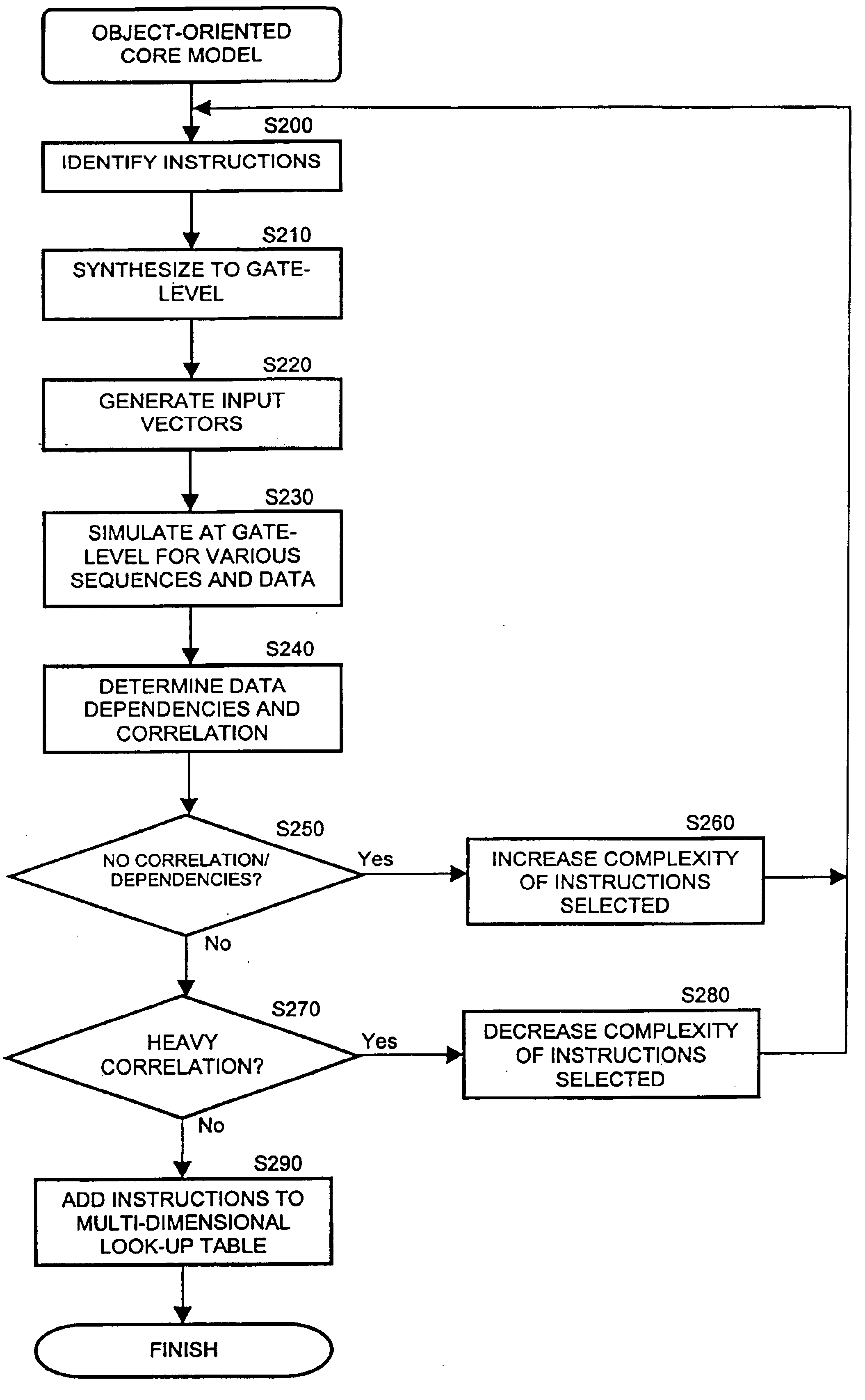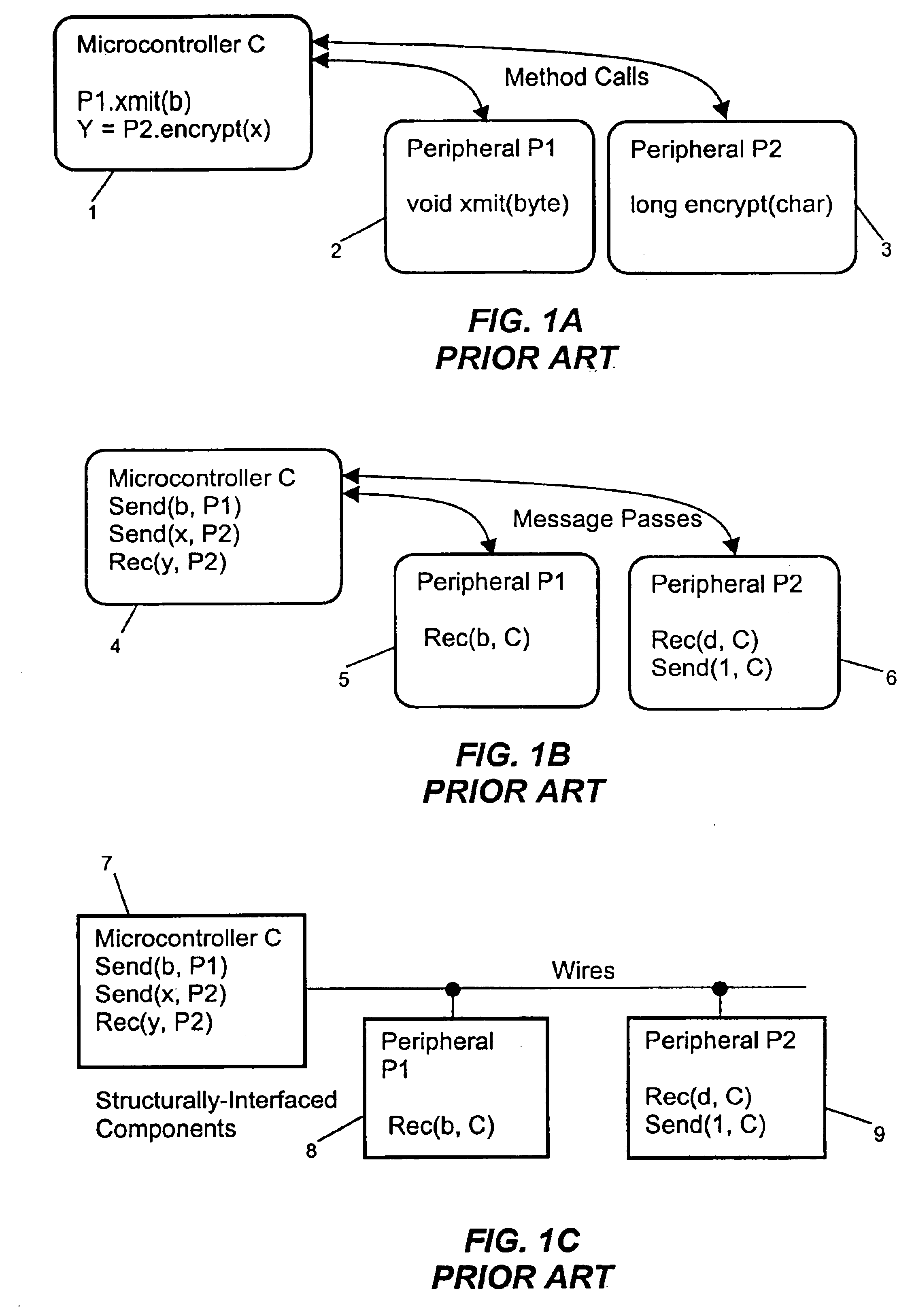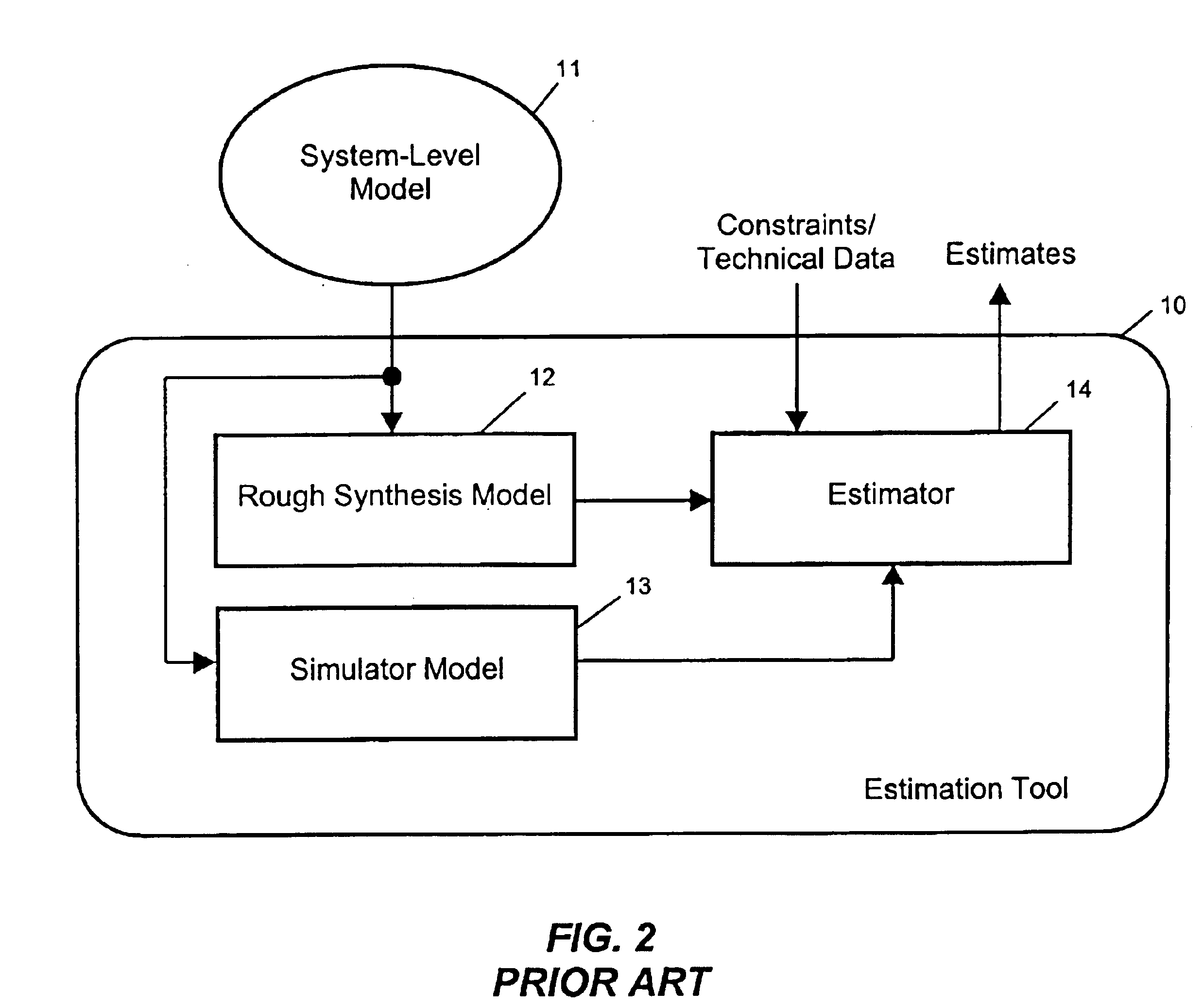Method for core-based system-level power modeling using object-oriented techniques
a power modeling and object-oriented technology, applied in the field of object-oriented techniques for core-based system-level power modeling, can solve the problems of not providing sufficient accurate information on detailed design metrics, modeling complex digital systems, and contributions not providing means for power and area and performance estimation, so as to simplify the implementation of the core energy library, reduce the complexity of simulation, and reduce the overall number of instructions
- Summary
- Abstract
- Description
- Claims
- Application Information
AI Technical Summary
Problems solved by technology
Method used
Image
Examples
fourth embodiment
the present invention is embodied in a computer program product for use in a computer system in which core models are accessed by an application program. The computer program product will be now described in summary fashion with reference to FIGS. 10A-10B. The computer program product includes a computer usable medium bearing computer executable code. The computer executable code is comprised of several code portions. The first executable code portion determines if the core model should simulate an idle state or exe cute an instruction, based upon whether the core model is called by another core model or it is called by a control object. The second executable code portion determines if resources required by the core model are free, and claiming the free resources if necessary. The third executable code portion adds an idle energy value to an energy accumulator. The fourth executable code portion determines if a clock counter is decremented, thereby collecting data about the elapsed ...
fifth embodiment
the present invention is a computer program product for use in a computer system in which core models are accessed by an application program. The embodiment will now be described in greater detail. The computer program product is a computer usable medium bearing computer programming statements for enabling the computer system to create at least one circuit model object for use by the application program. The computer programming statements including a class library expressing an inheritance hierarchy and including at least one core model base class for constructing instances of the at least one circuit model object. The core model base class is representative of a circuit element, wherein the core model base class has been constructed according to the present invention. In addition, the core model base class includes, as a respective subclass thereof, an autonomous core model class defining at least one core model member function for directly interacting with the application program...
sixth embodiment
the present invention is a computer system having an application program that models the energy and power requirements of a system-on-a-chip circuit design.
Referring to FIG. 11, an embodiment of a computer system is depicted, including a processor 40, I / O devices 43 and a video display terminal 41. The computer system further includes a memory 42 including software instructions adapted to enable the computer system to perform the steps of the invention as described.
The computer network embodiment incorporates a server 45, connected to the processor 40 by a data link 44. The data link 44 is a conventional data link (e.g., Ethernet, twisted pair, FTP, HTUP, etc.) as is well-known in the art. The server 45 provides access to the core model libraries 46-49 connected to the server. As described above, the core model libraries 46-49 may be embodied on any number of different mediums (e.g., floppy disk, hard disk, optical disk, cartridge, tape, CD-ROM, writable CD, etc.) as are known in th...
PUM
 Login to View More
Login to View More Abstract
Description
Claims
Application Information
 Login to View More
Login to View More - R&D
- Intellectual Property
- Life Sciences
- Materials
- Tech Scout
- Unparalleled Data Quality
- Higher Quality Content
- 60% Fewer Hallucinations
Browse by: Latest US Patents, China's latest patents, Technical Efficacy Thesaurus, Application Domain, Technology Topic, Popular Technical Reports.
© 2025 PatSnap. All rights reserved.Legal|Privacy policy|Modern Slavery Act Transparency Statement|Sitemap|About US| Contact US: help@patsnap.com



